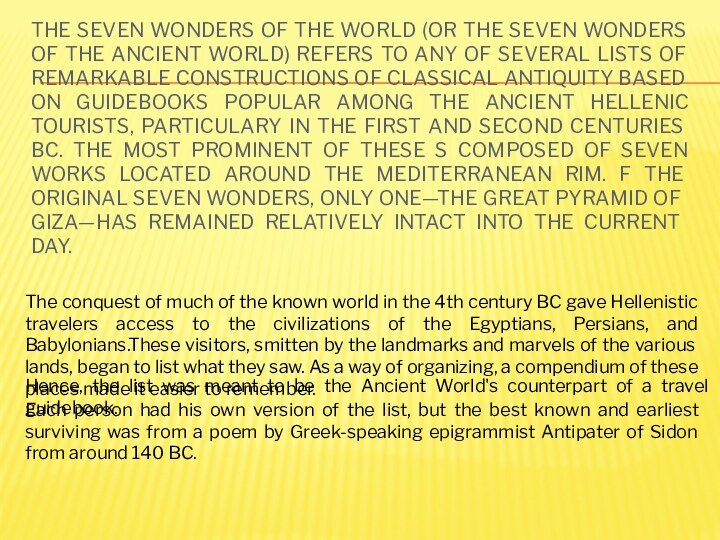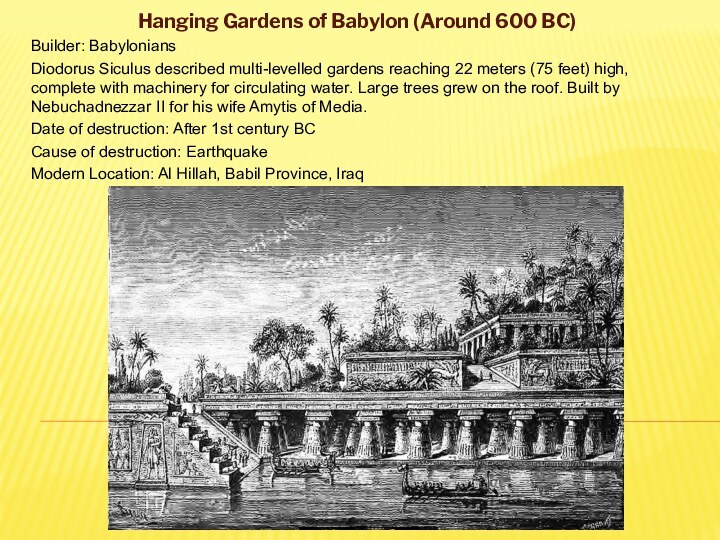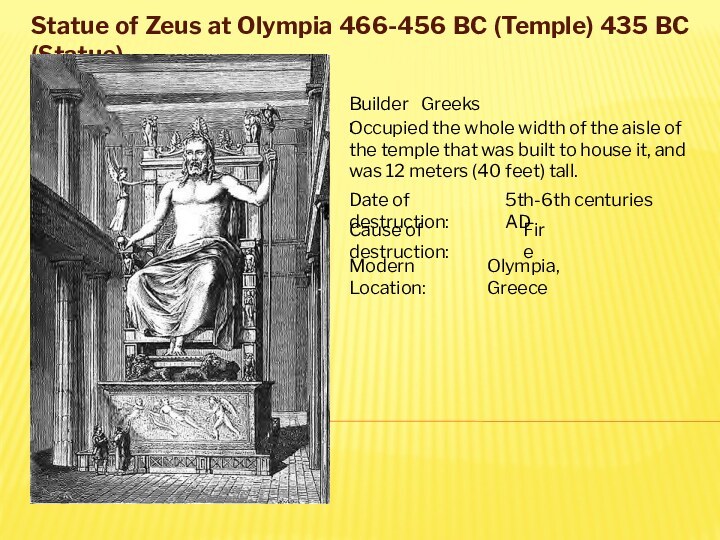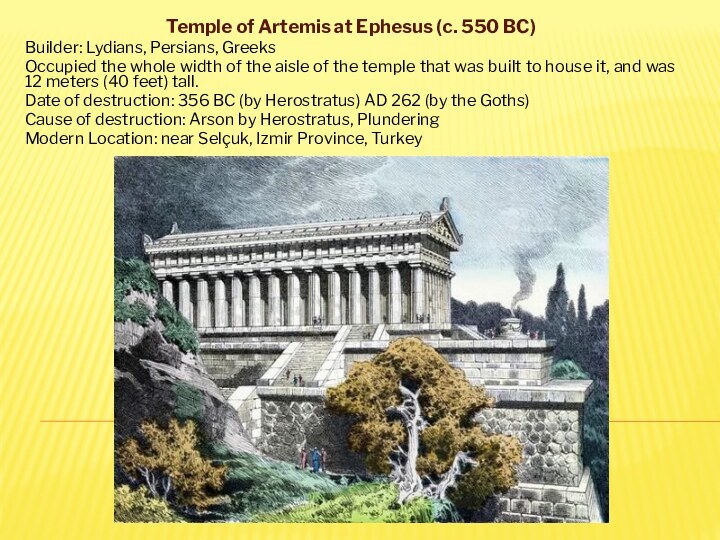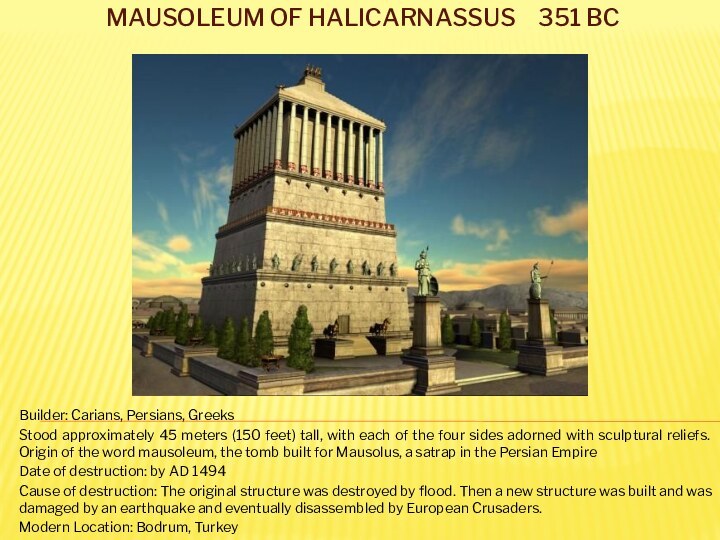Seven Wonders of the Ancient World) refers to any
of several lists of remarkable constructions of classical antiquity based on guidebooks popular among the ancient Hellenic tourists, particulary in the first and second centuries BC. The most prominent of these s composed of seven works located around the Mediterranean rim. f the original Seven Wonders, only one—the Great Pyramid of Giza—has remained relatively intact into the current day.The conquest of much of the known world in the 4th century BC gave Hellenistic travelers access to the civilizations of the Egyptians, Persians, and Babylonians.These visitors, smitten by the landmarks and marvels of the various lands, began to list what they saw. As a way of organizing, a compendium of these places made it easier to remember.
Hence, the list was meant to be the Ancient World's counterpart of a travel guidebook.
Each person had his own version of the list, but the best known and earliest surviving was from a poem by Greek-speaking epigrammist Antipater of Sidon from around 140 BC.

